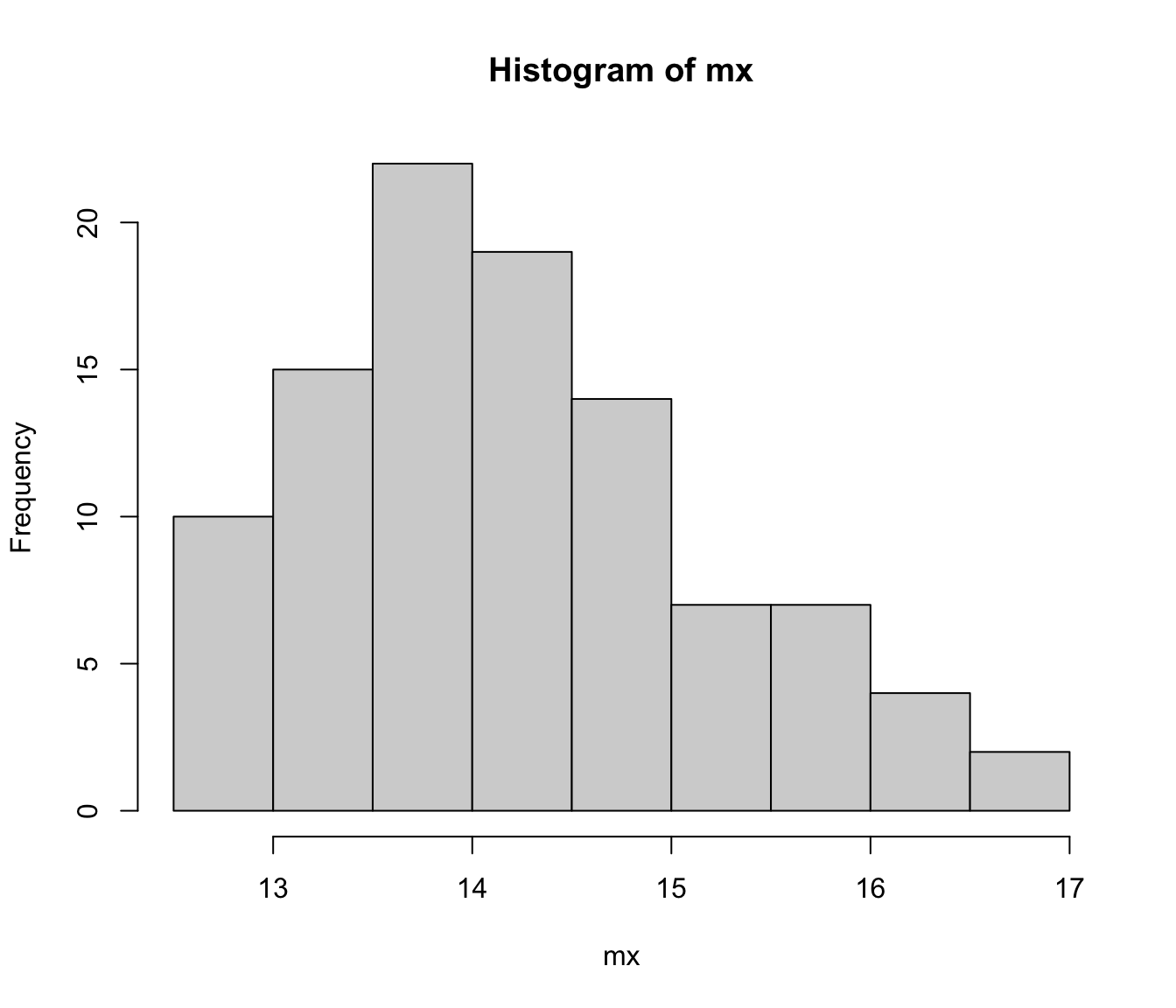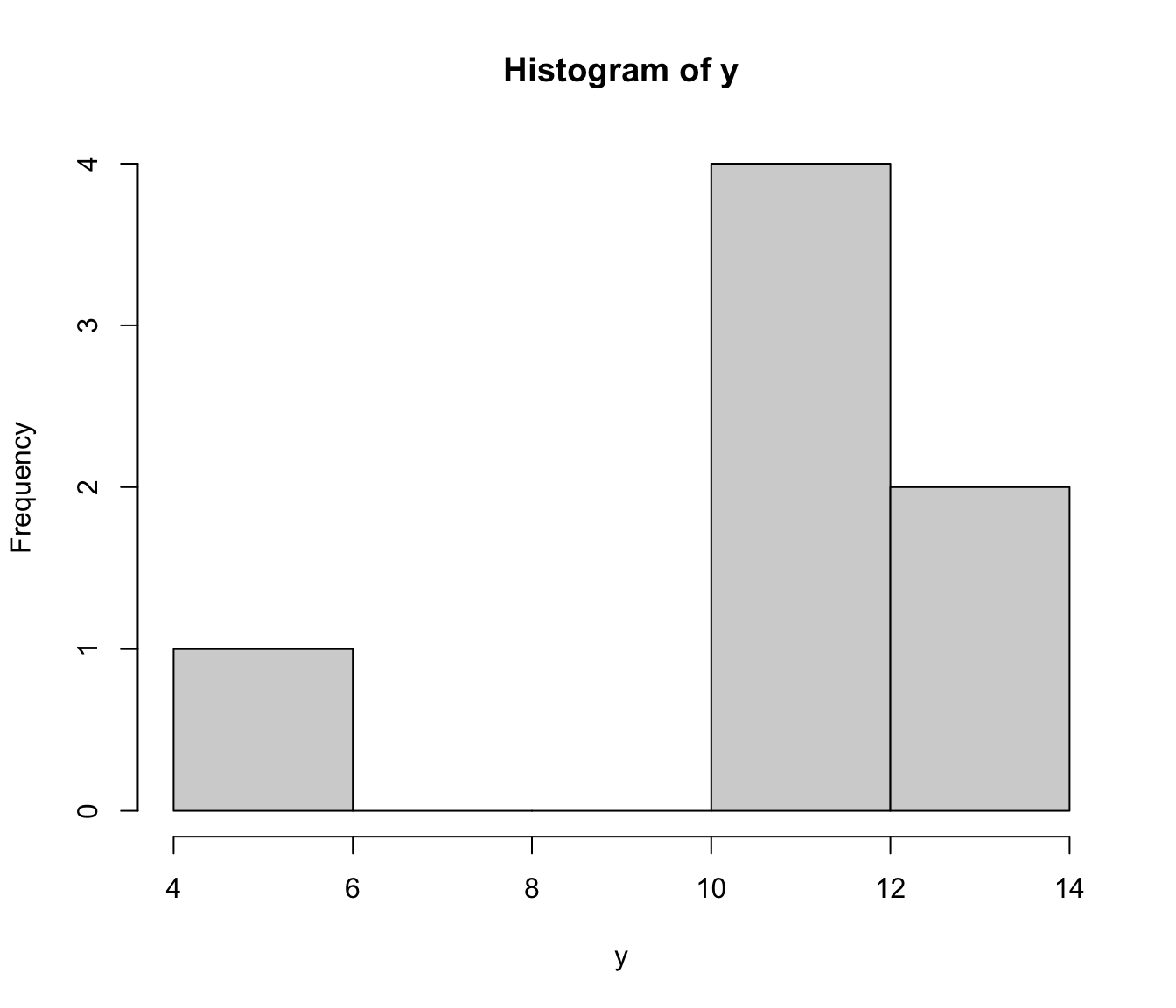16.2 Writing your own functions
Once we have a useful block of code, which we may wish to use repeatedly and in different circumstances, it can be very useful to turn this into a new function. This is done simply by assigning a name to a function which consists of this block of code. The value of the last instruction in the function is returned as the value of the function. The invisible function is useful to avoid this being printed out.
sim.max <- function() {
nsim <- 100
x <- rnorm(nsim * 30, mean = 10, sd = 2)
mat <- matrix(x, ncol = 30)
mx <- apply(mat, 1, max)
hist(mx)
invisible(mx)
}The function can then be activated (or called) simply by typing its name in the usual way.

To provide detailed control of the function we can add arguments. These have stated default values but we can override these by specifying (or passing) different values.
sim.max <- function(n = 30, mn = 10, s = 2, nsim = 1000) {
x <- rnorm(nsim * n, mean = mn, sd = s)
mat <- matrix(x, ncol = n)
mx <- apply(mat, 1, max)
hist(mx)
invisible(mx)
}
sim.max(50, 20, 2)